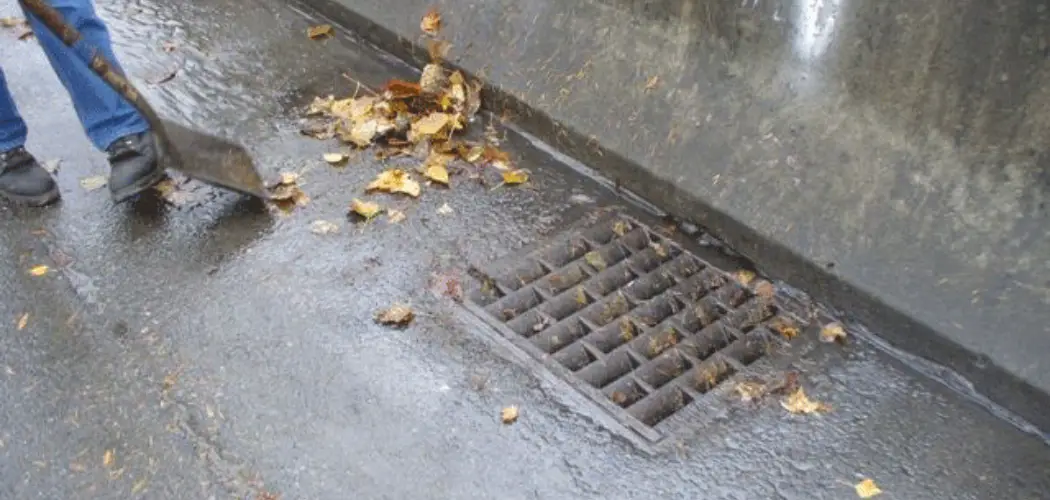Cleaning a residential catch basin is an essential task that homeowners often overlook. A catch basin is an important part of your property’s drainage system and plays a critical role in preventing flooding, especially during heavy rainfalls. When the catch basin becomes clogged with debris, it can cause water to back up and flood your property. Not only is this unpleasant and damaging, but it can also be costly to fix.
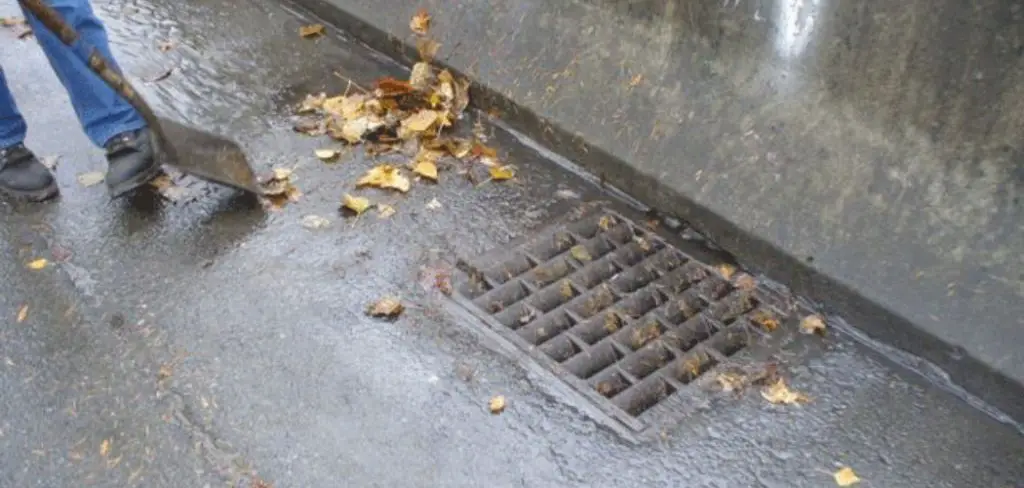
The main advantage of cleaning a residential catch basin is the prevention of flooding and sewer backups. Regular maintenance will also extend the life of your catch basin, saving you money in the long run.
Another advantage is that clean catch basins promote cleaner waterways. Catch basins are designed to capture debris and pollutants before they enter storm drains and eventually end up in rivers, lakes, or oceans. In this blog post, You will learn in detail how to clean a residential catch basin.
Step-by-step Instructions for How to Clean a Residential Catch Basin
Step 1: Inspect the Catch Basin
The first step in cleaning a residential catch basin is to inspect it for any visible debris, such as leaves, twigs, or dirt. This will help determine the level of cleaning required and identify any potential issues that may need to be addressed.
Step 2: Gather Supplies
In order to properly clean a catch basin, you will need some basic supplies such as a shovel, rake, bucket, gloves, and a hose. Make sure to have these supplies on hand before you begin.Using a shovel and/or rake, carefully remove any visible debris from the catch basin. Be cautious not to push the debris further into the drain or damage any components of the basin.
Step 3: Empty the Basin
Scoop out any remaining water and debris from the bottom of the catch basin using a bucket or similar container. This will allow for better access to the walls and floor of the basin. Using a brush or similar tool, scrub the walls and floor of the catch basin to remove any built-up grime or residue. This will help ensure proper drainage and prevent clogs.
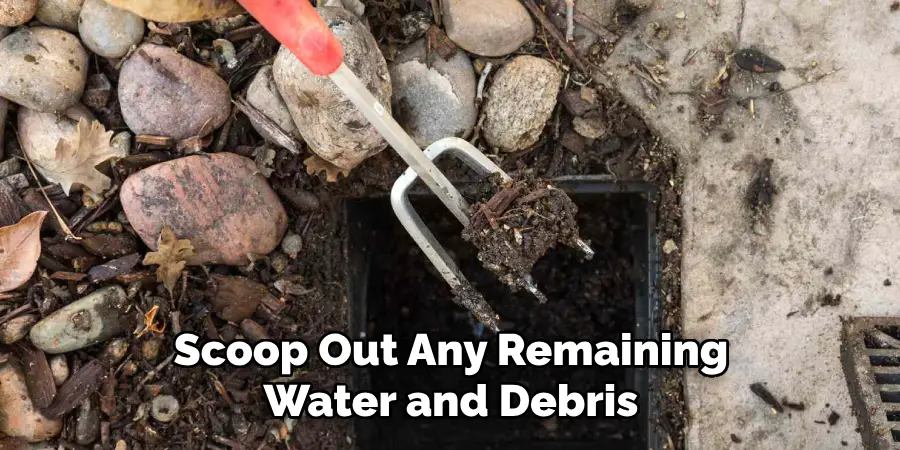
Step 4: Rinse with Hose
Using a hose, rinse the catch basin thoroughly to remove any remaining debris or cleaning solution. Ensure that all areas are cleaned and free of obstructions. After rinsing, check for any remaining obstructions in the drain pipes leading to the catch basin. Use a plumbing snake or similar tool to remove any stubborn debris.
Step 5: Inspect for Damage
While cleaning, take note of any potential damage to the catch basin or drain pipes. If you notice any cracks, leaks, or other issues, it’s best to address them as soon as possible before they become bigger problems. Once the catch basin is cleaned and any potential issues are addressed, test the drainage by pouring a bucket of water into the drain pipes. This will ensure that everything is working properly.
Step 6: Regular Maintenance
To prevent future build-up and clogs, it’s important to regularly clean and maintain your residential catch basin. Make sure to schedule regular inspections and cleanings to ensure proper functioning. Additionally, consider installing a catch basin filter or screen to prevent debris from entering the drain pipes in the first place.
By following these simple step-by-step instructions, you can easily clean a residential catch basin and ensure proper drainage for your property. Remember to always wear proper protective gear and address any potential issues promptly to avoid costly repairs in the future.
Safety Tips for How to Clean a Residential Catch Basin
1. Wear Protective Gear
Cleaning a residential catch basin can expose you to harmful chemicals and bacteria. It is important to wear protective gear such as gloves, goggles, and a face mask to protect yourself from any potential hazards.
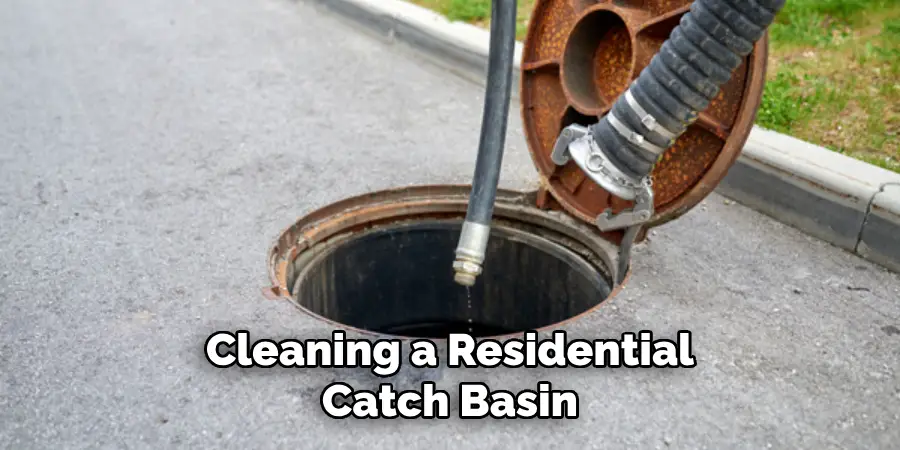
2. Turn Off the Water Supply
Before attempting to clean the catch basin, make sure to turn off the water supply that is connected to it. This will prevent any water from flowing into the basin while you are cleaning it, making the process easier and safer.
3. Use Non-Toxic Cleaning Products
When choosing cleaning products for your residential catch basin, opt for non-toxic and environmentally friendly options. This will not only be safer for you but also better for the environment.
4. Remove Debris with a Scoop
Using a scoop, remove any large debris such as leaves, twigs, or stones from the catch basin. This will prevent these items from clogging the drain and causing potential blockages in the future.
5. Use a High-Pressure Washer
For stubborn dirt and grime, use a high-pressure washer to clean the walls and bottom of the catch basin. This will help remove any buildup and ensure that the basin is thoroughly cleaned.
6. Inspect for Damage
While cleaning the catch basin, take the time to inspect it for any signs of damage such as cracks or leaks. If you notice any issues, it is important to repair them promptly to prevent further damage.
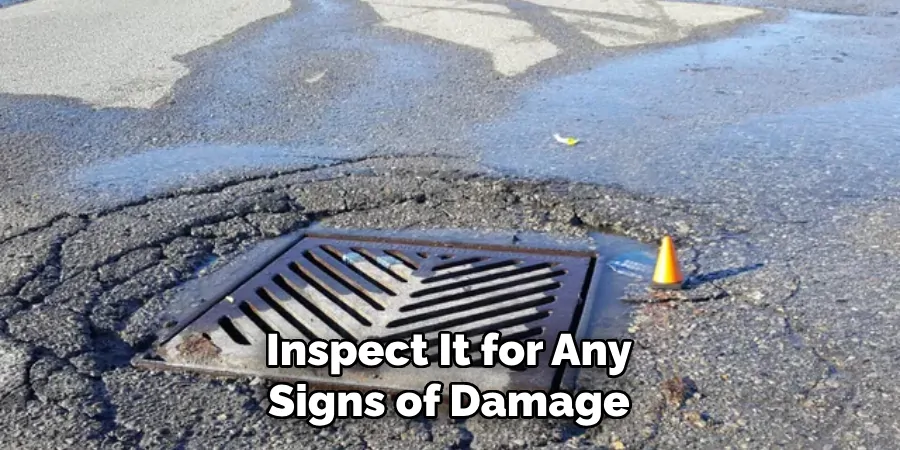
7. Regular Maintenance
To avoid major blockages and build up in your residential catch basin, it is important to perform regular maintenance. This can include cleaning the basin every few months and checking for any potential issues.
By following these safety tips, you can effectively clean your residential catch basin without putting yourself at risk. Remember to always prioritize safety and use proper protective gear when handling potentially hazardous materials. Regular maintenance and using non-toxic products will not only keep your catch basin clean but also help protect the environment.
Benefits of Cleaning a Residential Catch Basin
1. Prevents Blockages and Overflows
Catch basins are designed to trap debris, dirt, and other pollutants that enter the stormwater system. However, if not cleaned regularly, these catch basins can become clogged and cause blockages in the system. This can lead to overflows of contaminated water onto streets, sidewalks, and even into homes or businesses. By regularly cleaning residential catch basins, you can prevent these blockages and overflows from occurring.
2. Reduces Risk of Flooding
In addition to preventing blockages, regular cleaning of residential catch basins can also help reduce the risk of flooding. When debris and pollutants build up in a catch basin, it can restrict the flow of water and cause it to back up and flood the surrounding area. This can be especially problematic during heavy rainstorms or in areas prone to flooding. By keeping catch basins clean, you can ensure that water flows freely and reduce the risk of flooding.
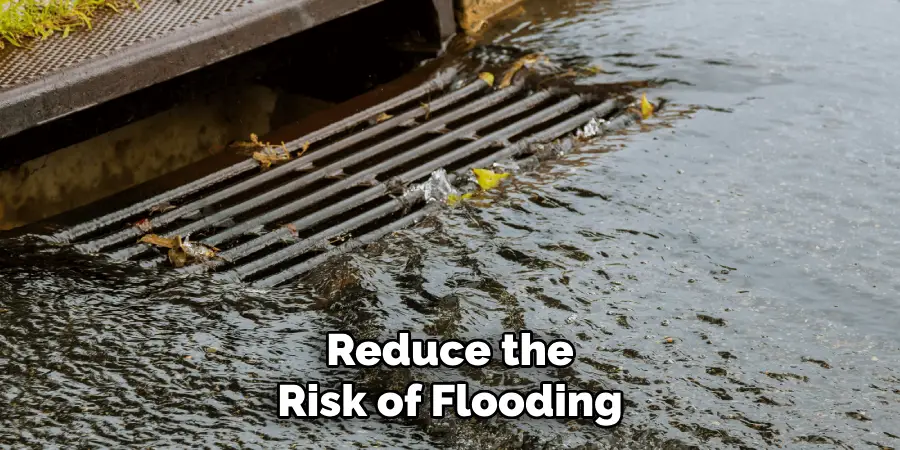
3. Protects Local Water Sources
Clean catch basins also play a crucial role in protecting local water sources such as rivers, lakes, and oceans. As mentioned earlier, catch basins are designed to trap pollutants and prevent them from entering the stormwater system. By regularly cleaning these catch basins, you are preventing these pollutants from reaching our water sources and potentially harming aquatic life.
4. Extends the Life of the Stormwater System
Regular maintenance and cleaning of residential catch basins can also extend the lifespan of the stormwater system. When catch basins are clogged and not functioning properly, it puts extra strain on the rest of the system, including pipes and drainage channels. Over time, this can cause damage and lead to costly repairs. By keeping catch basins clean, you are helping to maintain the overall health and functionality of the stormwater system.
5. Improves Overall Water Quality
In addition to protecting local water sources, cleaning residential catch basins can also improve the overall water quality of an area. By removing pollutants and debris from the stormwater system, you are preventing them from entering our waterways and potentially contaminating drinking water sources. This is not only important for human health but also for the health of plants and animals that rely on clean water for survival.
6. Promotes a Cleaner and Safer Neighborhood
By regularly cleaning residential catch basins, you are not only benefiting the environment but also promoting a cleaner and safer neighborhood. Overflows from clogged catch basins can create unsanitary conditions and attract pests such as mosquitoes, which can spread diseases. By keeping catch basins clean, you are reducing the risk of these issues and promoting a healthier and more pleasant living environment.
7. Helps Meet Regulatory Requirements
Many cities and municipalities have regulations in place for stormwater management, including regular maintenance and cleaning of catch basins. By regularly cleaning residential catch basins, you are not only complying with these requirements but also helping to prevent potential fines or penalties for non-compliance. This ensures that your neighborhood is meeting regulatory standards and contributing to a cleaner and healthier environment for everyone.
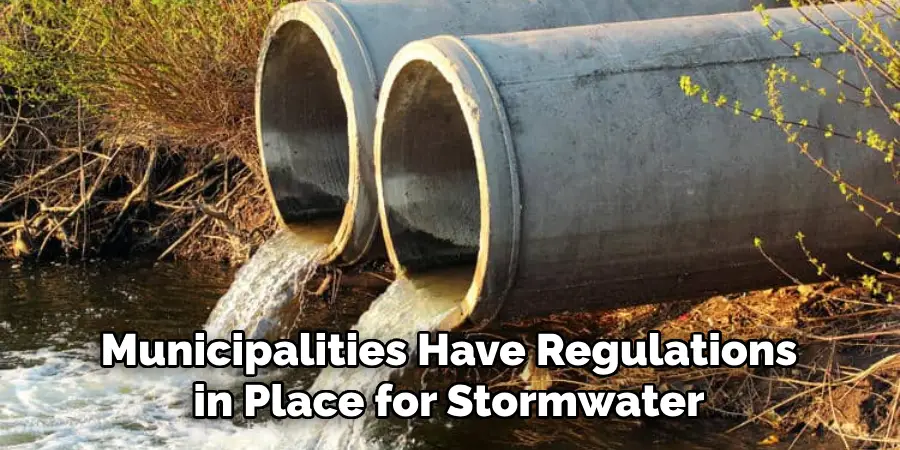
Overall, there are numerous benefits to regularly cleaning residential catch basins. By doing so, you are not only preventing blockages and flooding but also protecting local water sources, extending the life of the stormwater system, improving water quality, promoting a cleaner and safer neighborhood, and meeting regulatory requirements.
Preventive Maintenance After Cleaning a Residential Catch Basin
Now that you have successfully cleaned your residential catch basin, it is important to perform regular preventive maintenance to keep it in good condition and prevent any future clogging or damage. Here are some tips on how to maintain your catch basin:
1. Regularly Inspect the Basin
To ensure that your catch basin is functioning properly, inspect it regularly for any signs of debris buildup, cracks, or damage. If you notice any issues, address them immediately to prevent further damage.
2. Clear Debris
Remove any debris such as leaves, twigs, and dirt that may have accumulated in the catch basin. This will prevent clogging and ensure proper water flow.
3. Check the Grates
Make sure the grates covering the catch basin are secure and in good condition. Replace any damaged grates to prevent debris from entering the basin.
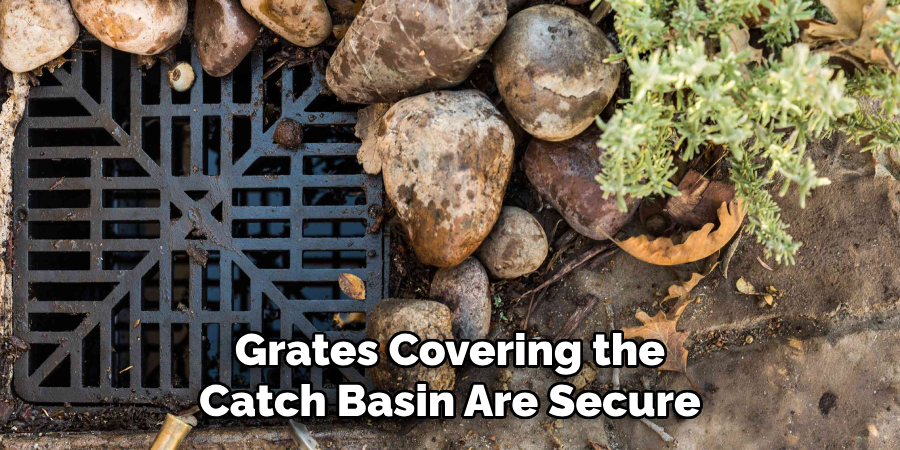
4. Trim Surrounding Vegetation
Keep the area around the catch basin clear of any overgrown vegetation as it can easily clog the drainage system.
5. Monitor Water Flow
Pay attention to how quickly water is draining from your catch basin after rain or storms. If you notice slow drainage or standing water, it may be a sign of clogging and the catch basin may need to be cleaned again.
6. Use Enzyme Cleaners
Consider using enzyme-based cleaners to keep your catch basin clean and maintain proper bacterial balance in the system. These cleaners can help break down any organic material that may accumulate in the basin.
7. Schedule Professional Maintenance
It is recommended to schedule professional maintenance for your catch basin at least once a year. This will ensure thorough cleaning and inspection of the entire system, preventing any potential issues.
By following these preventive maintenance tips, you can ensure that your residential catch basin remains in good condition and functions properly. Regularly maintaining your catch basin will not only save you from potential costly repairs but also help protect the environment by preventing pollution from clogged drainage systems.
Troubleshooting and Problem-solving for Cleaning a Residential Catch Basin
Cleaning a residential catch basin is an important task that helps prevent clogs and blockages in the drainage system. However, there may be times when the cleaning process does not go as smoothly as expected. In such cases, troubleshooting and problem-solving skills are essential to resolve any issues that may arise.
Here are some common problems that may occur while cleaning a residential catch basin, along with tips on how to troubleshoot and solve them:
1. Difficulty in accessing the catch basin
Problem: One of the most common issues faced during catch basin cleaning is difficulty in accessing the basin. This can happen if there is debris blocking the grate or if the location of the basin is not easily accessible.
Solution: If the grate is blocked, use a rake or shovel to clear away any debris. If the location of the basin is obstructed by landscaping or other structures, try using a portable pump to remove excess water and make it easier to access the basin.
2. Clogs or blockages in the drainage system
Problem: Sometimes, while cleaning the catch basin, you may encounter clogs or blockages in the drainage system. This can be caused by a buildup of debris or sediment in the pipes.
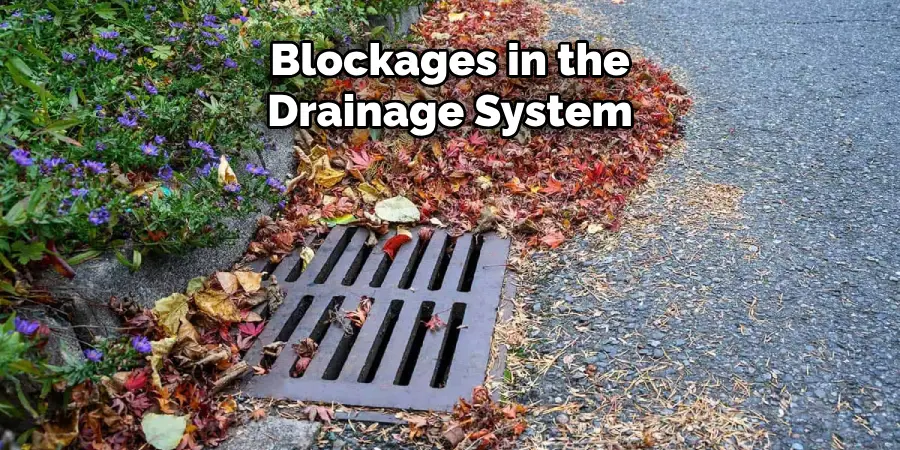
Solution: Use a plumbing snake or high-pressure water jet to remove any clogs from the pipes. If necessary, use a vacuum truck to suck out any stubborn blockages from the system.
3. Foul odor coming from the catch basin
Problem: Another common issue that may arise during catch basin cleaning is a foul odor emanating from the basin. This can be caused by a buildup of organic matter or stagnant water.
Solution: Use a deodorizing cleaner specifically made for catch basins to eliminate any unpleasant odors. In addition, regularly flushing the basin with clean water can help prevent the buildup of odor-causing substances.
4. Damage to the catch basin
Problem: In some cases, you may accidentally damage the catch basin while cleaning it. This can happen if excessive force is used or if the basin is already weakened due to age or wear.
Solution: In case of minor damages, use epoxy putty or sealant to patch up any cracks or holes. If the damage is significant, it may be necessary to replace the catch basin entirely.
5. Safety hazards
Problem: Cleaning a catch basin can pose certain safety hazards, especially if you are not familiar with the proper procedures and precautions.
Solution: Always wear protective gear such as gloves and goggles while cleaning the basin. In addition, make sure to work in a well-ventilated area and avoid using harsh chemicals that may cause harmful fumes.
6. Recurring clogs or blockages
Problem: After cleaning the catch basin, you may find that clogs or blockages occur again soon after.
Solution: This could be due to an underlying issue such as tree roots growing into the pipes or a structural problem with the drainage system. If recurring clogs are a persistent issue, it may be best to consult a professional plumber for further inspection and repairs.
Overall, troubleshooting and problem-solving skills are essential when it comes to cleaning residential catch basins. By being prepared for potential issues and knowing how to address them effectively, you can ensure that your catch basin is properly cleaned and maintained, preventing any future problems in the drainage system.
Conclusion
In conclusion, maintaining a clean and functional catch basin is crucial for the overall health and well-being of your residential property. Regular cleaning and maintenance not only prevents potential water damage, but it also helps to protect the environment by reducing pollutants from entering our water systems.
One important thing to remember when cleaning a residential catch basin is to always follow safety precautions. Make sure to wear protective gear such as gloves and goggles to avoid any potential hazards. It is also recommended to have a partner with you to assist in case of emergencies.
Another key factor in keeping your catch basin clean is proper disposal of debris and pollutants that are removed during the cleaning process. These materials should never be dumped into storm drains or bodies of water, as it can cause harm to aquatic life and contribute to pollution. I hope reading this post has helped you learn how to clean a residential catch basin. Make sure the safety precautions are carried out in the order listed.

